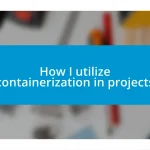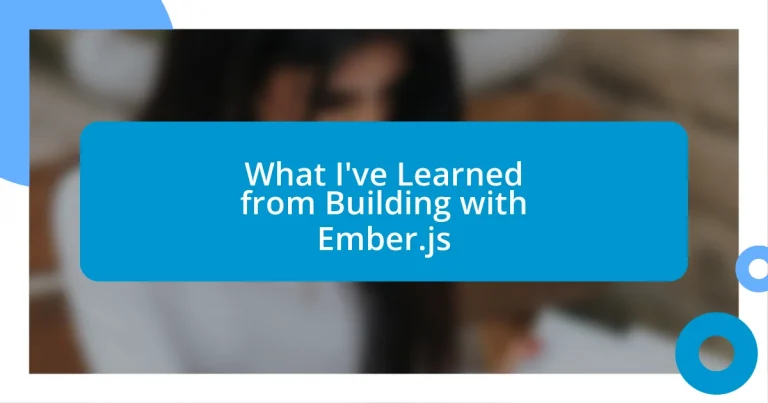Key takeaways:
- Ember.js offers a structured approach to web development with strong conventions, enhancing productivity and user experience.
- Effective state management and leveraging testing frameworks are crucial for building robust and maintainable applications.
- Active participation in the Ember community fosters collaboration and broadens knowledge, making challenges more manageable.
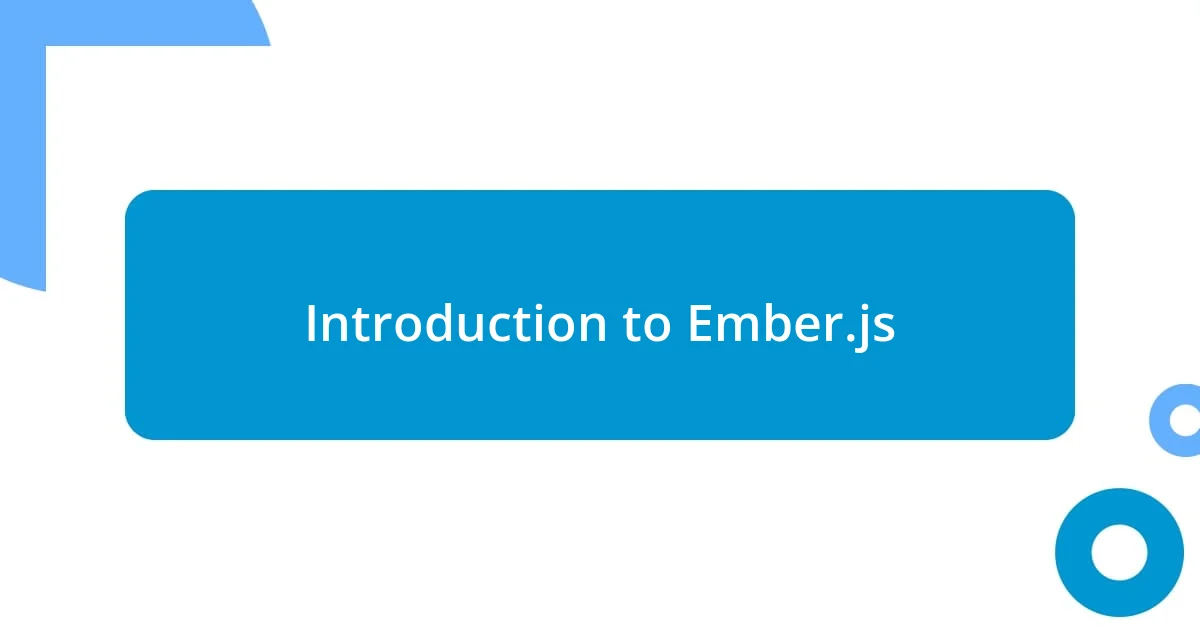
Introduction to Ember.js
Ember.js, for me, has been an exciting journey into the world of web development. It’s not just a framework; it’s a robust toolkit designed to help developers build ambitious applications with ease. Have you ever found yourself tangled in a web of code, unsure of how to proceed? That’s where Ember really shines, offering a structured approach that can sometimes feel like a breath of fresh air amidst coding chaos.
What drew me to Ember in the first place is its strong conventions, which allow developers to focus on what truly matters: crafting great user experiences. I remember my first encounter with Ember’s router—what a relief it was to have a clear way to manage URLs and views. I often describe it as having a reliable map while navigating through a bustling city; it makes everything feel more manageable and less overwhelming.
As I dove deeper into Ember’s ecosystem, I discovered its vibrant community and rich set of add-ons. The feeling of collaboration is invigorating, especially when you realize that you’re not alone in your development challenges. Have you ever participated in an open-source project? It’s a game-changer, allowing you to give back while enhancing your own skills. Embracing Ember.js has been more than a technical experience—it’s been an emotional one, transforming how I approach building applications.
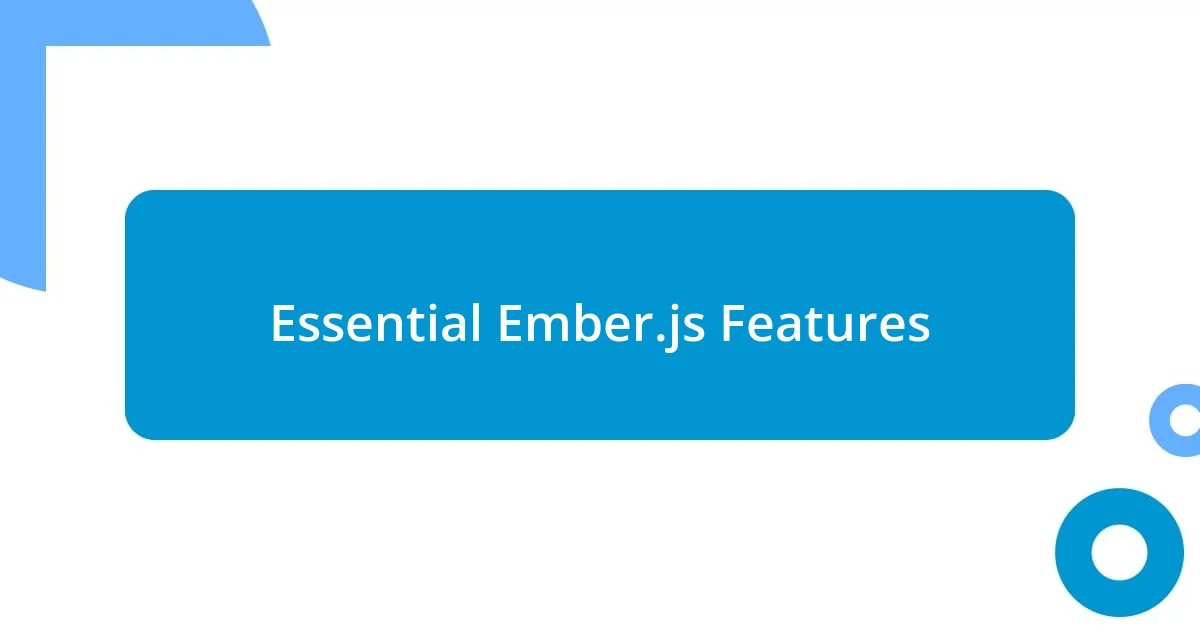
Essential Ember.js Features
One of the standout features of Ember.js is its powerful routing system, which I’ve found to be incredibly intuitive. When I first built an application with Ember, the router made managing different views a breeze. I remember feeling a sense of accomplishment when I easily added nested routes. It was like building a nested doll—everything just fit together seamlessly.
Essential Ember.js features include:
- Convention Over Configuration: This means you can focus on building rather than getting bogged down in setup.
- Ember Data: A sophisticated data layer that simplifies handling and normalizing data from APIs.
- Templates: Handlebars-based templates make the view layer feel more declarative and easy to manage.
- Components: Reusable UI components that allow for cleaner and more maintainable code.
- Strong Community: The vibrant community encourages learning and sharing through add-ons and plugins.
Every time I leverage these features, I’m reminded of how they enhance both productivity and the overall development experience.
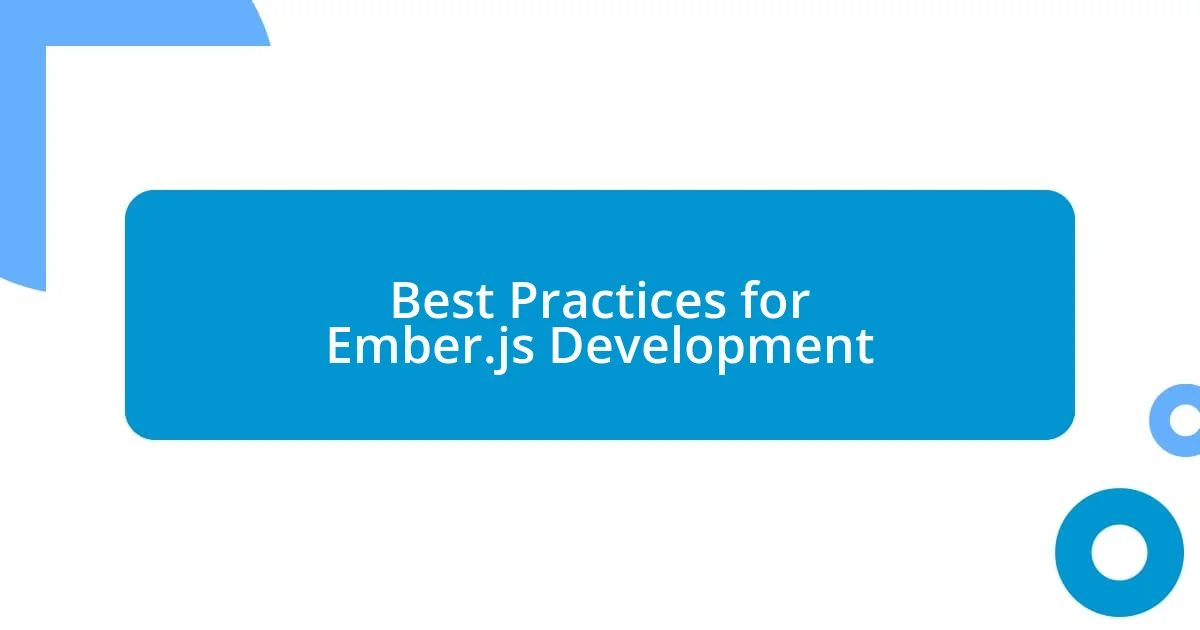
Best Practices for Ember.js Development
When it comes to best practices in Ember.js development, I’ve learned that following conventions is key. I remember the first time I tried to deviate from Ember’s prescribed patterns—what a headache it was to debug! It taught me that using Ember’s conventions not only streamlines the development process but also improves collaboration with team members who expect a certain structure. Embracing the framework’s philosophy allowed me to focus more on problem-solving rather than wrestling with my own mistakes.
Another important practice is to leverage Ember’s powerful testing framework. In my experience, incorporating tests early on saved me countless hours of troubleshooting later. The sense of security I felt when seeing those green test results—well, it’s hard to describe! I recommend writing both unit tests for individual components and acceptance tests for user workflows. This dual approach has really paid off, ensuring that my applications remain robust as they grow.
Lastly, effective state management is crucial in Ember applications. I’ve had times when poorly managed state turned a simple feature into a complex puzzle. By using Ember’s built-in services for shared state, I’ve made my code cleaner and more efficient. It almost reminds me of organizing a busy kitchen—when everything is in its proper place, cooking feels effortless. With these practices in hand, I feel more confident in delivering high-quality applications that are both maintainable and scalable.
| Best Practices | Benefits |
|---|---|
| Follow Conventions | Streamlines development and enhances collaboration |
| Utilize Testing Framework | Increases reliability and reduces troubleshooting time |
| Manage State Effectively | Improves code cleanliness and efficiency |
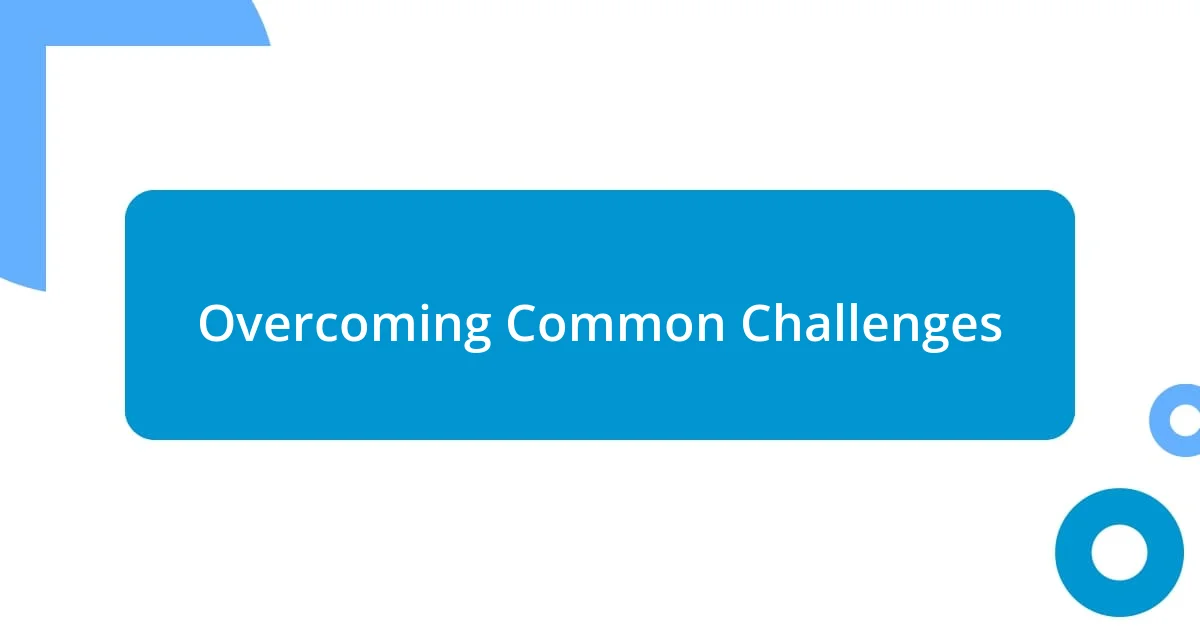
Overcoming Common Challenges
Building with Ember.js certainly comes with its challenges, but I’ve found that overcoming them often leads to profound learning experiences. For instance, I remember when I faced a stubborn bug related to Ember Data. I had spent hours tracking it down, only to realize I had overlooked how relationships were defined in my models. That moment taught me the importance of thoroughly understanding the framework’s data handling—sometimes, going back to the basics is what saves you.
Another significant hurdle I’ve faced is managing components effectively. Early on, I created overly complex components that became unwieldy and difficult to test. While grappling with this realization, I decided to rewrite them with simpler, smaller components. This not only made the code cleaner but also transformed my approach to development. Have you ever had that moment where simplifying something turned it from a headache into a joy? That’s how it felt for me, turning confusion into clarity.
Lastly, the daunting task of keeping up with Ember’s rapid updates and community changes can feel overwhelming. At one point, I hesitated to integrate new features because I feared breaking the existing application. However, I gradually learned that embracing these updates empowers my development. By setting aside dedicated time for exploring new enhancements, I found not just confidence but excitement in staying current. Isn’t it exhilarating to discover something that takes your work to the next level? Embracing these challenges has truly paved a path for growth in my journey with Ember.js.
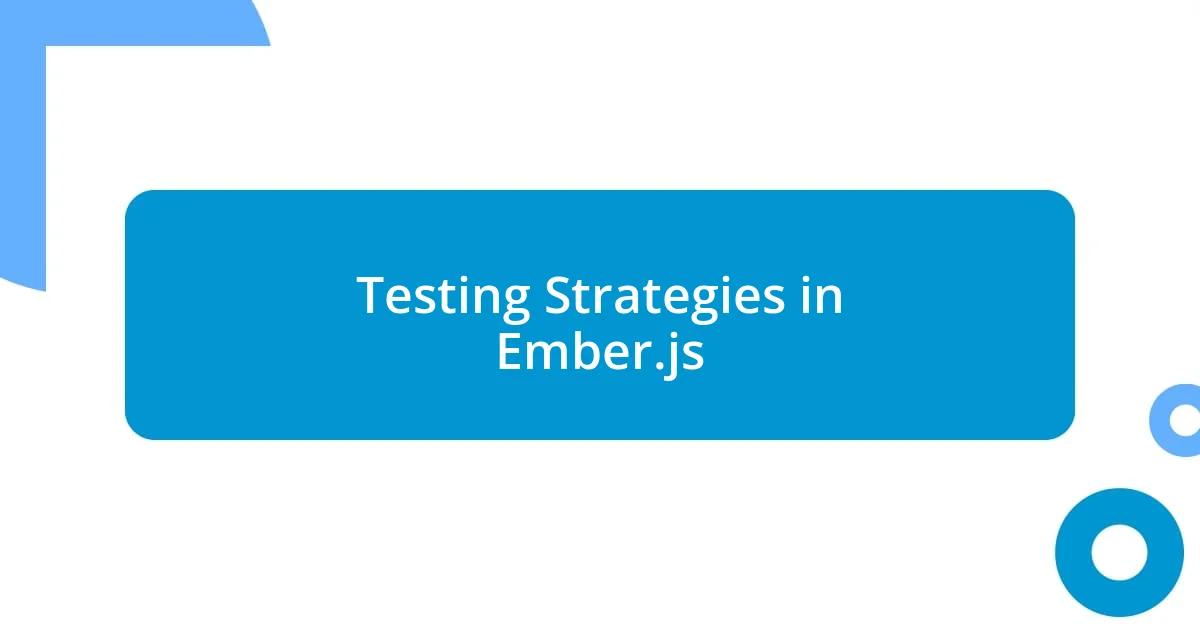
Testing Strategies in Ember.js
When it comes to testing strategies in Ember.js, I’ve discovered the importance of leveraging Ember’s built-in features. One of the first things I did was explore Ember QUnit for unit testing. It was a bit overwhelming at first, but once I grasped how it facilitated organized and rapid testing, I felt a huge sense of relief. Seeing my components pass their tests made me feel like I was on the right track.
Furthermore, I found acceptance tests invaluable for real-world scenarios. The first time I wrote an acceptance test for a user flow, I was surprised by how much it revealed about my application’s behavior. I remember feeling a bit like a detective, uncovering hidden flaws before users ever encountered them. Have you ever experienced that rush of satisfaction when everything works flawlessly during end-to-end testing? It’s an experience that solidifies the confidence I have in my app’s stability.
Lastly, integrating continuous integration (CI) into my workflow was a game changer. I resisted the shift at first, thinking it seemed unnecessary for smaller projects. Yet once I put it into practice, I realized it keeps my test suite running smoothly and consistently. The peace of mind that came from knowing tests were run with every push to my repository was invaluable. It’s like having a trusty assistant who never misses a detail—how could I have lived without that before?
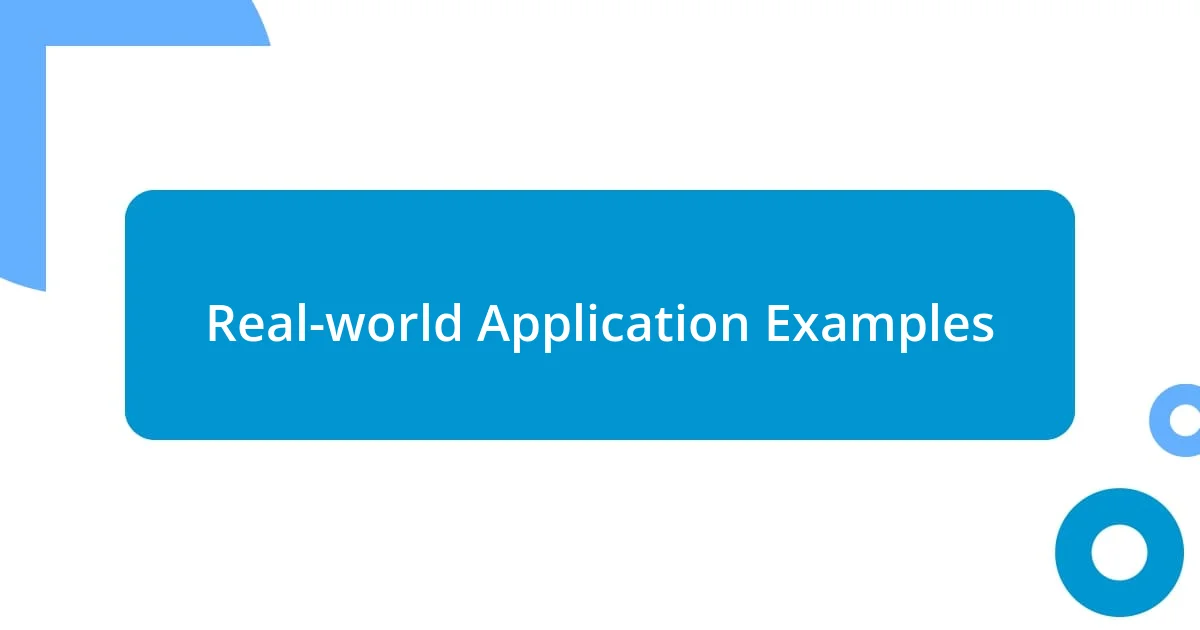
Real-world Application Examples
One of my favorite real-world applications built with Ember.js was a project focused on community engagement. I remember developing a platform where users could share local events, and integrating a rich tagging system was a revelation for me. It not only enhanced user experience but also required me to dive deep into Ember’s routing capabilities. Have you ever built something that felt like a bridge connecting people? That sense of contribution is what keeps me motivated.
Another example stands out: a web app for real-time data visualization in a financial context. I was initially daunted by the complexity of rendering dynamic data points, especially in a way that felt intuitive for users. Utilizing Ember’s component architecture allowed me to encapsulate functionalities neatly, ultimately leading to a smoother user interaction. There’s something incredibly rewarding about seeing users navigate seamlessly through your product. Have you felt that surge of pride when users enjoy your creation?
Lastly, I ventured into creating an educational resource platform where I implemented Ember’s powerful state management. This project taught me the significance of maintaining application states across different user interactions. The first time I demonstrated the fluid transition between modules to a group of educators, their excitement resonated with me. It’s amazing how the right tools can open doors to unique user experiences—what has your experience been like in creating something impactful?
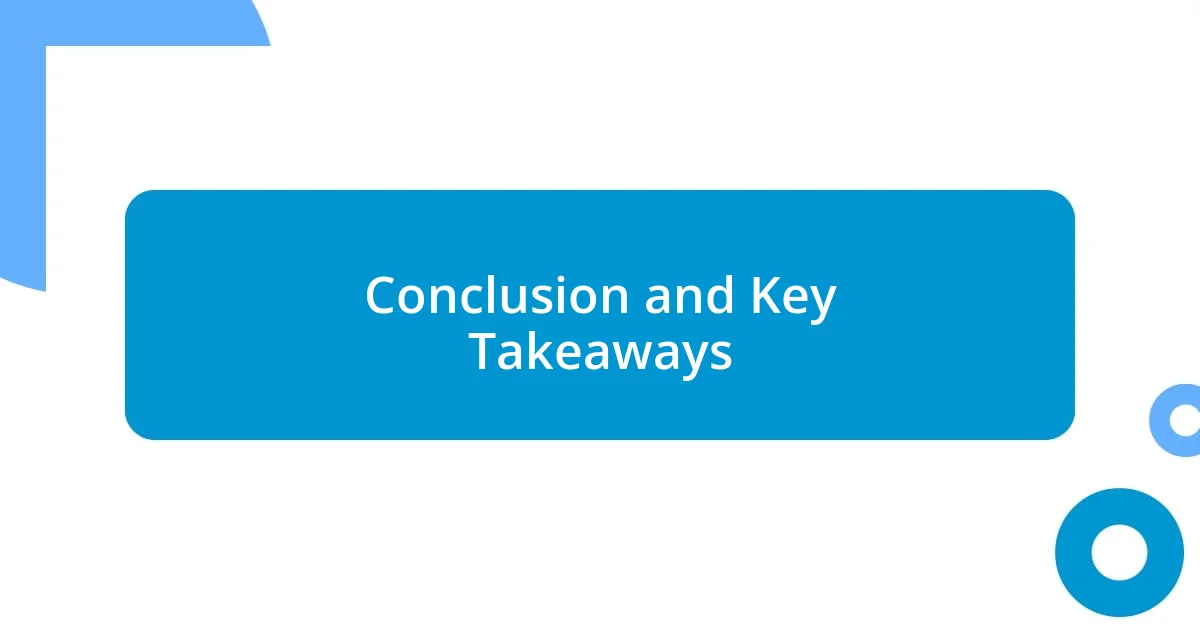
Conclusion and Key Takeaways
Ember.js has truly transformed the way I approach web development. One key takeaway for me has been the framework’s ability to handle complex state management effortlessly. I remember feeling a sense of clarity when I first grasped the concept of services in Ember, and how they allow you to share state across different parts of an application. Have you ever stumbled upon a feature that shifted your entire perspective on development? That was my moment with Ember.
Another essential insight I gained is the importance of community and collaboration. The Ember.js community is vibrant, and participating in discussions or attending meetups has broadened my understanding immeasurably. Sharing challenges and tips with others reminds me that we’re all on this journey together, striving to create better experiences for users. Isn’t it reassuring to know that there’s always someone out there ready to share their wisdom?
Finally, adopting Ember’s conventions makes scaling applications smoother and more manageable. I remember the initial confusion I faced while trying to choose the right project structure. Once I committed to adhering to Ember conventions, everything started to click into place. This experience underlined a valuable lesson: sometimes, embracing established practices can lead to unexpected ease and efficiency. What routines have you adopted that made a noticeable difference in your workflow?










